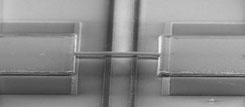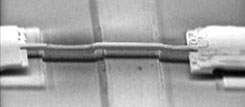RF Capacitive Switches
(by XiaoLi Wang)
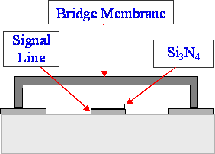
Current research has involved the design, fabrication and characterisation of RF MEMS capacitive switches. These switches utilise electrostatic force to produce mechanical movement to achieve a short or an open circuit in an RF transmission line. The switches also offer performance advantages such as low insertion loss, high isolation and virtually no power consumption making them ideally suited for use in modern telecommunications and wireless devices.
Bridge type structures has been produced using polycrystalline silicon as the structural material with silicon dioxide as the sacrificial layer. The bridge passes over an actuation line. When the structure is released and dc voltage exceeds an actuation value, a layer of silicon nitride on the actuation line prevents ohmic contact and short-circuit of the dc supply. Capacitance-voltage characteristics are measured to confirm the switch operation and determine the actuation voltage. For most switches, pull-down voltages between 10-80 volts was achieved with on/off capacitance ratio between 40 and 100.
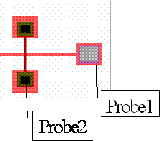 Figure 1. (a) Layout of switch capacitance measurement
Figure 1. (a) Layout of switch capacitance measurement
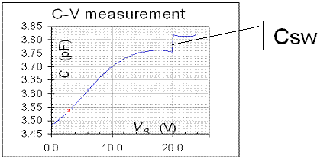 (b) Measured C-V characteristic.
(b) Measured C-V characteristic.
SEM examination of the fabricated switches is used to verify several aspects of the fabrication process and measure critical dimensions. Residual stress in the bridge material would cause deflection of the bridge on release and consequently affect the actuation voltage of the switches. SEM images reveal that the polysilicon bridges remain fairly flat after release and therefore have low residual stress.
